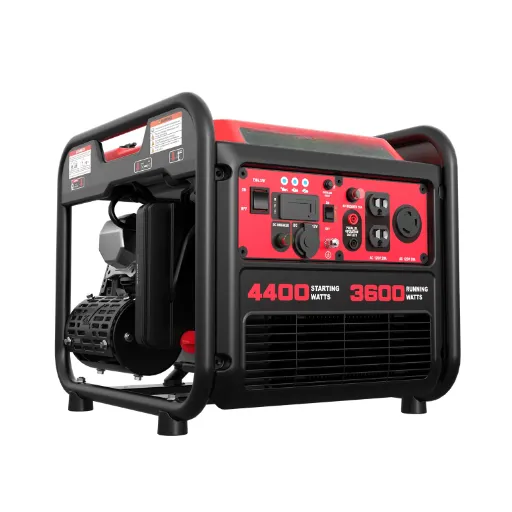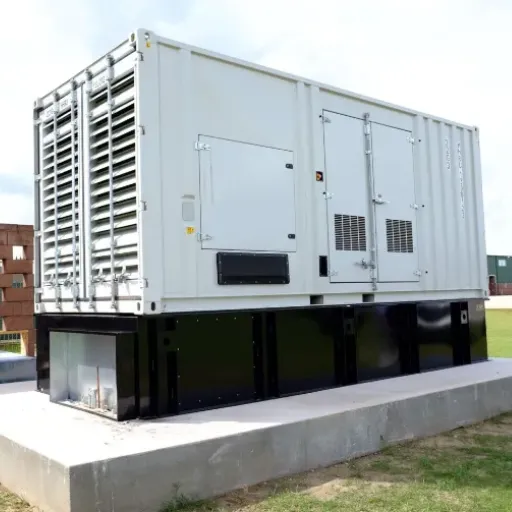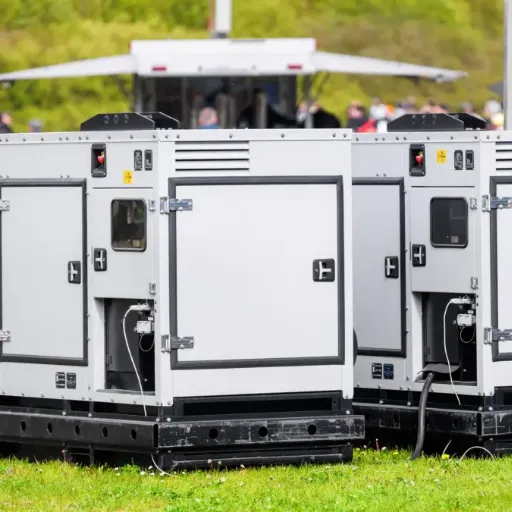Galvanized by unfavorable weather, a typical power outage in Colorado can be a nightmare, leaving all homes and businesses within the affected areas without electricity for an extended period. Beyond inconvenience, these outages pose safety hazards and raise questions about the quality of electrical services. Bolstered by the tips that follow, this blog post hopes to give the reader a well-rounded view of power outages within the borders of Colorado, their causes, how utilities respond to power outages, and what one can do to stay safe and prepared. Whether out of curiosity as to how the electric grid functions or to find time-tested advice for protecting one’s household during blackouts, this would be your go-to guide, shedding light on the must-know facts.
Overview of Power Outages in Colorado
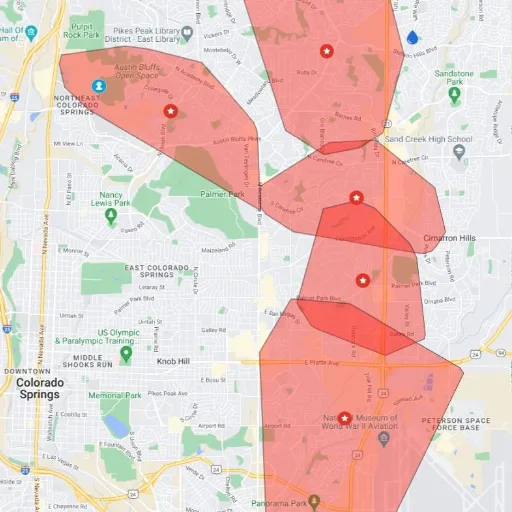
Power outages in Colorado can occur for many reasons. It is for this reason that one has to understand the cause to be ready. Common causes include adverse weather conditions such as snowstorms, high winds, and lightning, which destroy power lines and utility equipment. Other reasons could also be equipment failure, like a transformer failure, or maintenance work done by utility companies. Colorado’s forests are also very prone to wildfires, whose presence may cause outages as power may be cut by utilities to avert fire hazards. Finally, with growing energy requirements in specific areas, pressure can be put on the electric grid, sometimes resulting in localized blackouts. Being aware of these occurrences is a welcome impetus for individuals and communities to stay proactive in mitigating their effects.
Definition of Power Outage
A power outage, also described as a blackout or power cut, happens when the electrical power supply to a particular region is cut off to be without electricity for homes, businesses, and infrastructural applications. A myriad of issues can actually cause power outages, including extreme weather conditions, equipment failures, accidents, or deliberate shutdowns on the grid for maintenance or safety reasons. They could last a few minutes or maybe even days, depending on the extent of the problem and resources available to address it. Ideally, fast and efficient power restoration will, in times of disruption, require some kind of coordination among the relevant electricity companies, emergency services, and local governments to ensure minimal disruption to normal lives.
Common Causes of Electric Outages
Severe Weather Events
Natural disasters such as hurricanes, thunderstorms, tornadoes, and snowstorms are some of the most prominent causes of power outages. High winds knock down power lines, whereas snow weighs down poles to disrupt the electrical infrastructure. Lightning strikes cause short circuits or transformer overloads that almost immediately shut down the grid.
Equipment Failures
Ageing infrastructure leads to failure, especially when demand is high, such as during heatwaves or cold spells. Actors requiring transformation and cable strain, for example, require routine maintenance, and neglecting to maintain or wear out from unforeseen causes leads to power outages.
Animal Interference
Wildlife interference causes outages. There is direct interference by squirrels, birds, or snakes with power lines, with substations, and with transformers. Usually, these encounters create short circuits or damage very important components of the power network. An outage from wildlife interference is highly unpredictable and quite hard to address.
Human Activity
Construction activities can be a contributing factor to incidents of power outages, for instance, vehicle collisions with utility poles, and excavation activities that damage underground cables are significant contributors to outages. Apart from that, electrical system vandalism or theft of elements like copper wiring can also reduce grid performance.
Overloaded Systems
High loads may cause outages when used at the peak times, for example, when all air conditioners are running on a hot summer day. Overloading occurs when demand exceeds the network’s largest energy distribution capacity.
Impact on Communities
Power outages have a great and distant impact on communities, interrupting daily life and critical services. Households can be crippled by the use of essential heating or cooling systems, creating discomfort or health risk during adverse weather. Businesses record stoppages, leading to losses of income and strained supply chains. There comes a time when hospitals can no longer maintain life-supporting equipment unless adequate backup systems are installed, thereby jeopardizing the provision of care. Outages also cause disruptions in communication as internet and telephone services only work in the presence of stable electricity. Time-worthy outages lead to public security issues with streetlights and traffic signals that would have eventually been turned off, thereby raising the probability of accidents and situations that could delay emergency response. Statistics illustrate that outages cost the U.S. economy billions of dollars annually, thereby depicting their far-reaching societal and economic consequences.
Colorado Outage Map and Resources
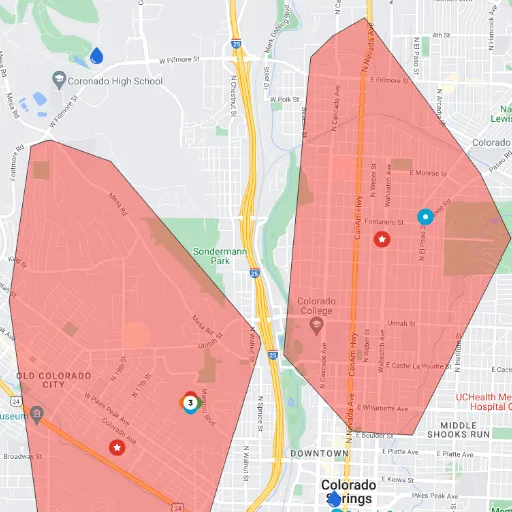
The Colorado outage map remains crucial for residents to stay informed about the prevailing power outages affecting the state. Real-time outage maps are available on the utility providers’ websites, such as that of Xcel Energy, showing the affected areas, the number of customers affected, and restoration times. You may also view updates through mobile applications or by signing up for text and email alerts from your utility provider. The Colorado government site provides resources for emergency preparedness, including guidance on forming an emergency kit and creating a communication plan in case of extended outages. Remember always to check that your utility company has your correct contact information so that you will receive any new alerts and instructions.
How to Access the Outage Map
Accessing the outage map is a simple process — just visit your utility provider’s official website and look for the “Outage,” “Service Interruptions,” or any other relevant heading where the interactive map is typically located. These outage maps allow you to grasp the power outage situation in the affected area, the number of customers affected, and a restoration update. For more detailed information, you can check recent updates that include localized information and customer reports from trusted online sources. When using all these tools, you remain aware of real-time data while navigating around disturbances.
Interpreting the Outage Map
The outage map provides a comprehensive view of the affected areas, often categorized by severity and impact. Merging this information with a database of continually updated complementary information gathered through online research enhances one’s knowledge of the ebb and flow of developments concerning the outage situations. This integration enables you to identify areas impacted by disruptions, measure the progress of restoration, and even detect patterns of interference on any adjacent affected sites. Utilizing these tools together means you are placed in a position where you will increasingly be informed with current data and have a comprehensive perspective on certain circumstances, enabling you to make the best decisions.
Additional Resources for Customers
Real-time updates from trusted online sources are combined with curated content to provide a more comprehensive view of relevant details for you. The end result is that you have constant access to information regarding the most relevant news, any changes in service, or disruptions affecting you. Through the use of this advanced tool, which compiles input from many different sources, you will quickly rise above the noise and pull in valuable insights and tips that keep you prepared and informed in our fast-paced environment.
Safety Tips During an Electric Outage
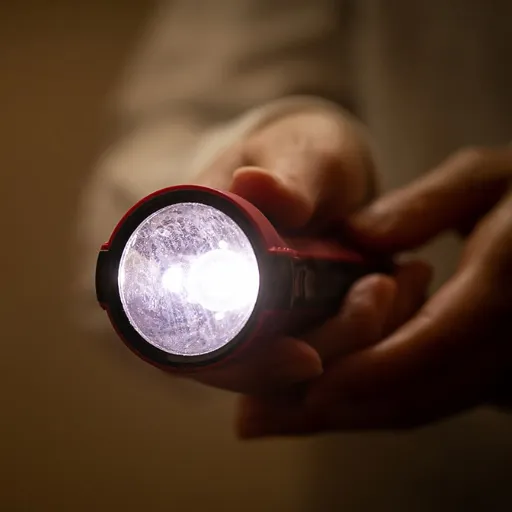
- Stay Away from Downed Power Lines: Always consider a downed wire to be live and dangerous. Stay away from it yourself and immediately report its existence to your local utility services.
- Use Flashlights Instead of Candles: A flashlight might come in handy in an outage situation, as it is safer to use than candles. Make sure to store some extra batteries.
- Unplug Appliances: Disconnect large appliances and devices to protect them from potential future power surges once the power is restored.
- Keep Refrigerators and Freezers Closed: Minimize the opening of the freezer doors to sustain the cold air and avoid food from spoiling. A full freezer can last 48 hours going undisturbed by opening.
- Operate Generators Safely: Use a portable generator outdoors, in a well-ventilated area, to prevent carbon monoxide poisoning. Never use it in a house or a garage.
- Stay Updated: Get updates on restoration efforts and weather conditions via a battery-powered radio or mobile device.
Preparation Before an Outage
A power outage preparedness approach can significantly alleviate the stress of an impending event and ensure safety. Start by assembling an emergency kit filled with essentials like a flashlight and extra batteries, nonperishable food, plenty of water, a first aid kit, and all necessary medications. Charge all your devices, and consider purchasing power banks for your phones to keep them powered. If you use any type of generator, be sure to have enough fuel in stock, and it has been tested and proven to work well. Being familiar with manual overrides–such as how to open your garage door without power–in your home is a plus. If your equipment is life-sustaining and operative on electricity, communicate with the power company beforehand and ascertain a backup supply. Also, be aware of the weather and grid updates in your locality to avoid the risk of outages, so you can take appropriate action accordingly.
What to Do During an Outage
During a power outage, safety and conservation should be at the top of one’s priorities. Unplug those sensitive electronics and appliances to protect them in case of a sudden power surge when power is restored. For lighting, use flashlights rather than candles, as they pose a lower fire hazard, and they should be kept within reach. Conserve the battery life of your cell phone by keeping usage to a minimum, and consider using power banks as an option for charging. Minimizing the time a fridge or freezer door has been opened helps keep the cold air trapped. Food stays fresh and good for about four hours in a refrigerator and up to 48 hours in a full freezer.
If Maitatsu is there, try to find shelter in a stable environment, such as a community center, or layer warm clothes in case you need to stay at home. Stay in line with emergency alerts on a power battery radio or those inexpensive mobile devices with a signal. People with medical or critical needs should be asked about immediate assistance through their emergency backup plan or local resources. Always follow the instructions of local officials, and beware of downed power lines and other invisible hazards.
Post-Outage Safety Considerations
After a power outage, it is essential to inspect the situation to ensure no hazards are present. Begin with the inspection of damaged electrical wiring or appliances, and do not switch them on until they are checked by professionals. Food safety is another big concern: throw away perishable things from your refrigerator and freezer if power is lost for more than four hours, so that any incidents related to food might occur. A flashlight should be used instead of a candle so as to reduce fire hazards, and make sure that your carbon monoxide and smoke detectors are working correctly. If you do use a generator, ensure the exhaust is vented at least 20 feet away from your home to prevent carbon monoxide poisoning. Replenish emergency supplies when all is said and done, after considering the upcoming weather and uncertain outages. Join forces with trusted local authorities and community resources to keep yourself informed and be sure of the disaster situations in your area.
Contacting Customer Service

If you have any further inquiries or requests for assistance, our dedicated customer service team is available to help. Call the numbers during business hours. Alternatively, feel free to send emails to the email address, and responses will be given as soon as possible. We devote great energy toward serving you, the kind of service you deserve, expediently and efficiently.
How to Report an Outage
If you encounter a service interruption, a few simple steps will enable you to report the incident and receive real-time assistance. First, check if the outage is restricted to your location or extends to a larger area by consulting the known outage maps and dashboards from our support service. The information can be accessed directly from our website under “Service Status.”
Plenty of updates and alerts on our live status page are worth watching; signing up for notifications might also keep you informed. Our teams strive relentlessly to get the power outage sorted at the earliest possible time, and we appreciate your patience in attending to it.
Customer Service Resources
To obtain comprehensive assistance, you should utilize all available resources to meet your needs. Visit the Help Center for an extensive guide with an FAQ covering various topics. Then, go ahead and get in touch with our customer support team through a direct line, email, or live chat for more personalized assistance. You may also find online advice sites that compile a number of interesting and useful troubleshooting tips and service improvement updates. These sites typically showcase the latest tools and trends in solving everyday problems quickly, ultimately leading to a smooth resolution of your current issue. Remember that the more enlightened you are, the more effectively you will act.
Emergency Contact Information
During calamities, it becomes essential to remain conversant with key numbers. These are some emergency contacts and organizations to have at hand:
- Police or Law Enforcement: Dial 911 for immediate assistance in life-threatening situations.
- Fire Department: Contact 911 for fires or hazardous situations requiring fire services.
- Medical Emergencies: Call 911 for ambulances or urgent medical aid.
- Poison Control Center: Reach out to 1-800-222-1222 for advice on poison-related incidents.
- National Suicide Prevention Lifeline: Call or text 988 for confidential support 24/7.
In addition to this, you may consider saving local utility service lines to report electrical outages.
Community Response to Power Outages
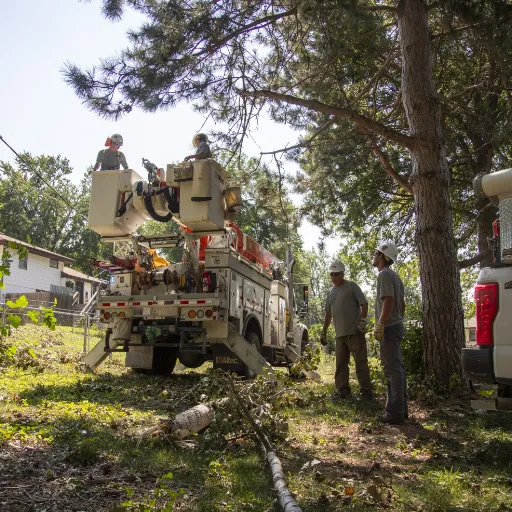
Other urgent incidents carry their urgency level for the safety of the community during the power outage. Here are the steps that matter in the community response:
- Check on Neighbors: Ask if elderly persons who are disabled or families with young children require any extra assistance with outages.
- Conserve Resources: Use battery power sparingly and ration supplies like flashlights and food to those who may not have enough.
- Stay Updated: Broadcast and mobile alerts aided by battery power keep you in constant touch with repair progress from utility companies and local authorities.
- Report Outages: Report an outage to your local utility company, so they know of the problem.
- Establish Communication: Establish a communication strategy within your community for sharing support, be it information or resources.
By working together, a community has a solid chance of mitigating the effect of an outage on all of its members and ensuring their health and security.
Emergency Services and Support
Reliable emergency services must be readily available in the event of any crisis, including power outages. Local emergency hotlines, shelters, medical services, and other emergency resources form the backbone of available support for emergencies. Several municipal websites provide updated contact details and crisis planning strategies for their respective areas. Furthermore, government and non-profit organizations often utilize websites or mobile apps to disseminate valuable information about disaster preparedness and recovery steps in the aftermath.
In terms of real-time updates, formal intersection sources consider digital resources that aggregate current data, such as weather alerts, grid status reports, and emergency response signals. These allow for far easier reference to the latest developments, aiding in timely, prompt responses. This information, coupled with localized guidance, will enable you to navigate an emergency while prioritizing safety and cooperation confidently.
Local Community Initiatives
Local community initiatives play a crucial role in resilience building and the preparedness of residents. Utilizing digital tools and platforms for coordinating, communities may share essential information around resource allocation, support networks, and safety protocols. These initiatives often provide unblockeds information for shelters, food distribution sites, and volunteer efforts. Having a clear and current map will provide valuable insights into the decision-making process in exigent situations. Communicating campaigns and initiatives, workshops, and training sessions alike all reinforce that bond and agreement to British life for all.
Engaging with Neighbors During Outages
Networking during a power outage greatly aids in the continued development of a prepared and supportive community. Sharing local resource information, service restoration timelines, and safety tips keeps others informed and lessens anxiety during uncertain times. Neighborhood communications can be established through group messaging applications, community boards, or huge check-ins from members themselves. Also, access to updated and localized data about shelters and essential services nearby guarantees that critical support isn’t withheld from anyone. Establishing these networks will enhance communities’ ability to tackle challenges, promote safety, and find solutions collectively during outages.
Reference Sources
-
Understanding the social impacts of power outages in North America: a systematic review
- Summary: This study systematically reviews 42 years of data (1978–2019) to understand the social impacts of power outages in North America. It highlights health concerns, particularly carbon monoxide (CO) poisoning, as a significant issue during outages.
-
Power outages and community health: a narrative review
- Summary: This narrative review examines the intersection of power outages and community health, focusing on co-occurring factors like displacement and extreme weather events.
Frequently Asked Questions (FAQs)
Q: What should I do to prepare for a power outage in Colorado?
A: There are a lot of safety measures to keep in mind while preparing for a Colorado power outage. Primarily, dealing with an emergency kit makes things much easier, hard to forget items such as water, non-perishable food, flashlights, and batteries. Also, charge all your mobile devices and include them in another power backup if you can. Being aware of the outage map from your utility provider keeps you informed about outages that may be unfolding in your neighborhood. You may want to discuss these plans with your community to confirm preparedness for everyone. Dependable communication during such events is in the nick of time.
Q: How can I stay updated on power outages in my area?
A: Power outages in your area can be checked through various resources. Most utility companies provide an outage map on their websites that provides real-time information about outages and restoration efforts. You may also go one step further by signing up for text alerts and emails from your utility provider to keep you informed regarding outages or restoration times expected. Following your local power company on social media is another effective way to stay informed. Engaging with your community can also help share information regarding service reliability and any ongoing issues.
Q: What are the safety tips during a power outage?
A: Safety comes first during power loss. Avoid candles and go for flashlight batteries. Keep the generator outdoors to avoid carbon monoxide poisoning. Hold on to the refrigerator and freezer doors to help preserve food for a longer time. Do not approach downed power lines, as they may pose potential dangers. It will also be helpful to know customer service contacts for assistance during emergencies. Armed with such knowledge, you can weather the outages with far less distress.
Q: How does Colorado’s energy sector ensure reliability during outages?
A: Various strategies are deployed in the power sector in Colorado to ensure reliability during power outages. Utility companies invest in improving the infrastructure to strengthen the resilience of the electric grid. Constraints to keeping power lines, substations, and their related equipment in top-notch condition are regular maintenance and upgrades ,with the least frequent outages. Besides, they reacted rapidly to outages by applying technology to forecast them efficiently. Community engagement and communication are useful tools, as informed customers will assist utility companies in assessing service reliability. Taking an acute interest in these lines will go a long way in reducing the impact of outages.



